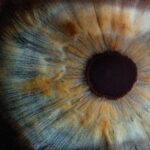 Objective: To present an algorithm, including in-depth clinical, electrophysiological and genetic studies, thanks to which a correct diagnosis of patients with Stargardt disease and cone-rod dystrophy was established.Material and methods: We present two patients who underwent a full ophthalmological examination, optical coherence tomography, fundus autofluorescence and/or fluorescein angiography, visual field testing and fullfield and multifocal electroretinography and the clinical diagnosis was established, confirmed and genetically.Results: Some of the symptoms of the patient with cone-rod dystrophy, as well as some of the clinical studies could be misinterpreted as Stargardt disease, but after in-depth electrophysiological studies demonstrated reduced diffuse electrophysiological activity of cones and to a lesser extent of rods, a revision of the initial clinical diagnosis was required, confirmed later genetically.Conclusion: In-depth clinical, electrophysiological and genetic testing of patients with hereditary retinal dystrophies is essential for the correct diagnosis and choice of therapeutic approach. The presented algorithm is useful for differential diagnosis between the different types of hereditary retinal dystrophies, which is very difficult in some cases and requires a differentiated approach. Read the full article here.
Objective: To present an algorithm, including in-depth clinical, electrophysiological and genetic studies, thanks to which a correct diagnosis of patients with Stargardt disease and cone-rod dystrophy was established.Material and methods: We present two patients who underwent a full ophthalmological examination, optical coherence tomography, fundus autofluorescence and/or fluorescein angiography, visual field testing and fullfield and multifocal electroretinography and the clinical diagnosis was established, confirmed and genetically.Results: Some of the symptoms of the patient with cone-rod dystrophy, as well as some of the clinical studies could be misinterpreted as Stargardt disease, but after in-depth electrophysiological studies demonstrated reduced diffuse electrophysiological activity of cones and to a lesser extent of rods, a revision of the initial clinical diagnosis was required, confirmed later genetically.Conclusion: In-depth clinical, electrophysiological and genetic testing of patients with hereditary retinal dystrophies is essential for the correct diagnosis and choice of therapeutic approach. The presented algorithm is useful for differential diagnosis between the different types of hereditary retinal dystrophies, which is very difficult in some cases and requires a differentiated approach. Read the full article here.
526
